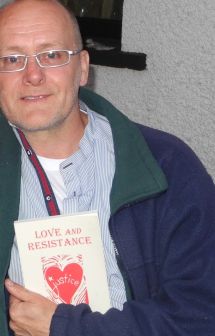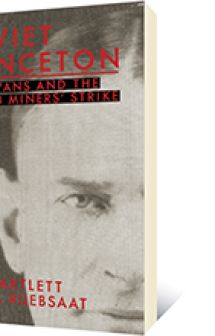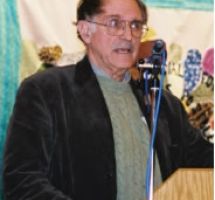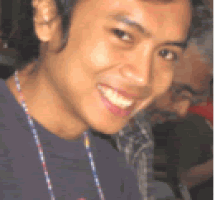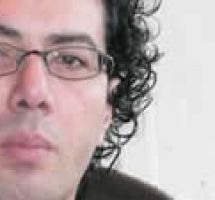“Music has an inexplicable way of elevating humankind to its noblest action.” Youssou N´Dour, Senegalese singer
“…creative
ability is a quintessential part
of being human: to assert one´s
Creativity is also to assert one´s
Humanity.” Dennis Brutus, South African poet
“…music can enable people, somehow, to ´get inside´ each other´s minds, feel each other´s suffering and recognize each other´s shared humanity –that is, in common understanding, to have empathy for each other”. Felicity Laurence. P. 14
This collection of essays by thirteen authors from five continents explores a new terrain – the relationship of music with peace as an active search. Music is easy to define, an art form in sound which all cultures create and use. For many peace is the absence of war, for some it is the absence of fear and need, for others peace is presence of justice. For this book the agreed definition of peace, conceived by peace researcher and contributor to this volume, Johan Galtung is: peace is the capacity to transform conflicts with empathy, creativity and non-violence.
To work for peace in any medium is a true act of creativity. The geography of pace is vast and barely charted. We can never be sure what event or action will bring peace to fruition; probably many factors are involved. So if music can be developed to be part of the process; to add to the sowing of many seeds, to empower us for peace–building and to disempower the forces of violence, so much the better for all.
Olivier Urbain is the co–founder of a global network, Transcend: Art and Peace, (see: www.tapnetwork.org/home/about/) which is dedicated to using all the arts in the cause of peace. An amateur musician and a peace researcher with the Toda Institute for Global Peace and Policy Research, he is ploughing new ground when he brings together academics with abstract ideas on the topic, practitioners of music as a way to achieve peace on a personal and group level with musicians who try through their work to influence society to be peaceful.
As George Kent and others explain, music itself is not peaceful; in some contexts it is violent and hostile. Governments and the military have used the power of music for centuries to stir soldiers and populaces into warfare and xenophobia; music is used to harass prisoners and street people. But music has the power to move us deeply, to release feelings of love and unity as well as to reveal deep wells of creativity in all of us; even artists who are not musicians can be inspired by music to create in the search for our common humanity. Music is an important part of oral history, those without written history have kept their stories of resistance to oppression and their journey to peace and justice alive down through centuries to continue to move us and feel empathy with their lives.
Music therapy, the use of music to create personal health and recovery from mental and physical illness and social trauma, has a well–documented history and is practised in hospitals and schools, prisons and situations of local conflict. In her chapter, Maria Elena Lopez Vinader gives an excellent background to the practice of this therapy and how she applies it in her work while she challenges us to see if this discipline can move towards ´a social music therapy´ in a greater social and even planetary transformation.
Vegar Jordanger describes a process called Guided Imagery with Music (GIM) helping to reconcile Chechen, North Ossetian and Russian participants to create a ´collective vulnerability´ where all might transform feelings of shame and anxiety into positive emotions within the group; a part of the process of healing cultural violence.
In the context of peace activism, music has a long history of strengthening peaceful feelings and supporting peaceful action. Several writers explore this path in the book. The role of music in the USA civil rights movement, as well as in peace and popular movements in Europe and USA, is better known than the importance of music in the struggle for freedom in South Africa – which surely could be called the struggle for peace. It was documented in an excellent film a few years ago. ´AMANDLA: A revolution in 4 part harmony´ (see www.bbcf.ca film reviews) showed how music kept alive the revolution against the cruelty of apartheid for decades in South Africa. In her contribution, Anne–Marie Gray carries that further as she documents the history of music and social change in South Africa to its application to the important reconciliation process after apartheid was abolished. This continuing process as Cynthia Cohen writes can assist in social integration. She says that, “music is well suited to the work of building peace, because it can facilitate communication, understanding and empathy across differences of all kinds.”
Building across differences is described in Urbain´s chapter on the musician, Yair Dalal, self–identified as an “Arab Israeli Jew”. Through the revelation of his own mixed sense of identity and his results in uniting Arabs and Israelis in their common musical heritage, he seeks to create peace through the bonds of music. He not only uses the music and instruments of both groups but brings together Arab and Israeli adults and children to create and perform music together. Urbain writes, “Yair Dalal´s music allows us to build a better appreciation of the common roots of the people in the region [Middle East] , and it gives hope that they one day may find a way to once again share their ancestral lands.”.
We should also heed one writer´s timely warning that we must carefully guard against the globalized music industry, selling music as a commodity for enormous power and profit. Connecting peace and music — indeed all forms of creativity — is an important and powerful way to ensure that all artists and arts are honoured for their creations and to encourage everyone to recognize her or his potential to create art. If to create art is to recognize our humanity, surely that creative impulse will be linked to a sense of interconnectedness between all humans in a possible peaceful world.
In a brief review it is impossible to do justice to all the contributors on the many interpretations and reflections about connecting music and conflict resolution. My bias is to seek practical examples; I am an activist, not an academic. Another reader might choose to highlight different parts of the book. Regardless of emphasis, anyone interested in this little explored field will find in this volume many nuggets of insight and fertile ideas to nurture study, action and performance in the essays as well as the valuable appendices and references.
Olivier Urbain has done an admirable collaboration with a diverse group of writers to present a thoughtful and thought–provoking exploration of new connections in human endeavour where we all belong. A complementary website with sources & music is being created: www.book.music4ct.org/media
In the quoted words of Antjie Krog, South African poet,
“…among the keynotes of song and suffering there are soft silences where we who belong, all of us, can come to rest.”

 Follow
Follow

